Capybara Facts: Meet the World’s Largest (and Chillest) Rodent
July 19, 2025Can Capybaras Be Potty Trained? Honest Vet Advice, Real Owner Reviews & Step-by-Step Training Guide.
July 22, 2025Let’s talk about rodents.
Yep, those furry little creatures that get a bad rap in cartoons and basements. But here’s the thing—rodents are more than cheese thieves or scurrying nuisances. They’re one of the most diverse and ecologically essential groups of mammals on Earth.
Introduction
You might be surprised to hear this, but rodents make up about 40% of all mammals on Earth. Yeah, that’s not a typo—nearly half! There are around 2,375 living species scattered across the globe (The Conversation).
Now, I know what you might think — aren’t rodents just rats and mice? Not even close. They come in all shapes and sizes, from the super-tiny pygmy jerboa (imagine something smaller than a golf ball) to the capybara, which is a chill, oversized guinea pig that loves hanging out in water.
Despite their reputation—thanks to a few horror movies and messy basements—rodents are a big deal in nature. They help spread seeds, keep soil healthy, and feed a lot of other animals. Without them, a bunch of ecosystems would be in real trouble.
What’s even more impressive? These guys have been around for at least 56 million years. That’s a long time to stick around and keep adapting. Whether it’s forests, deserts, or even cities, rodents have figured out how to make it work.
So, in this post, I’ll walk you through 15 rodent species that are worth knowing about. We’ll look at what makes each one unique, the cool things they do in their habitats, and why they matter more than most people realize.
Table of Contents
Comparative Overview of 15 Fascinating Rodent Species
| Species | Size | Weight | Habitat | Diet | Conservation Status | Special Feature |
| Capybara | 4.6 feet long | 77-143 pounds | Semi-aquatic, South America | Herbivore | Least Concern | World’s largest rodent |
| Naked Mole Rat | 3-4 inches | 1-2 ounces | Underground tunnels, East Africa | Herbivore | Least Concern | Exceptional longevity (30+ years) |
| Pygmy Jerboa | 1.7 inches | 0.11 ounces | Desert, Pakistan & Afghanistan | Granivore, Folivore | Data Deficient | World’s smallest rodent |
| Chinchilla | 12-13 inches | 1-2 pounds | Andes mountains | Herbivore | Critically Endangered | Densest fur of any land mammal |
| Giant Beaver | Up to 7.2 feet | 198-276 pounds | North America (extinct) | Herbivore | Extinct | Bear-sized prehistoric rodent |
| African Crested Porcupine | 24-36 inches | 22-66 pounds | Africa, Mediterranean | Herbivore | Least Concern | Impressive defensive quills |
| Springhare | 14-18 inches | 7-9 pounds | Africa | Herbivore | Least Concern | Biofluorescent fur |
| Pacarana | 30-31 inches | 22-33 pounds | South America forests | Herbivore | Least Concern | Third largest rodent, sole member of family |
| Degu | 5-8 inches | 5-10 ounces | Chile | Herbivore | Near Threatened | Social, diurnal pet rodent |
| Viscacha | 12-20 inches | 3-9 pounds | South America | Herbivore | Varies by species | Related to chinchillas |
| Muskrat | 16-25 inches | 1.5-4 pounds | North American wetlands | Omnivore | Least Concern | Semi-aquatic adaptations |
| Coypu/Nutria | 17-25 inches | 11-22 pounds | Wetlands (invasive in many areas) | Herbivore | Least Concern | Invasive species causing ecological damage |
| Beaver | 25-35 inches | 35-60 pounds | North America, Europe | Herbivore | Least Concern | Ecosystem engineer, builds dams |
| Wild Hamster | 8-14 inches | 7-14 ounces | Europe, Asia | Omnivore | Critically Endangered | Range declined by 75-94% in Europe |
| Bavarian Pine Vole | 3-4 inches | 1-2 ounces | Alpine regions of Bavaria | Herbivore | Critically Endangered | Fewer than 50 individuals remain |
Detailed Species Profiles
1. Capybara (Hydrochoerus hydrochaeris)
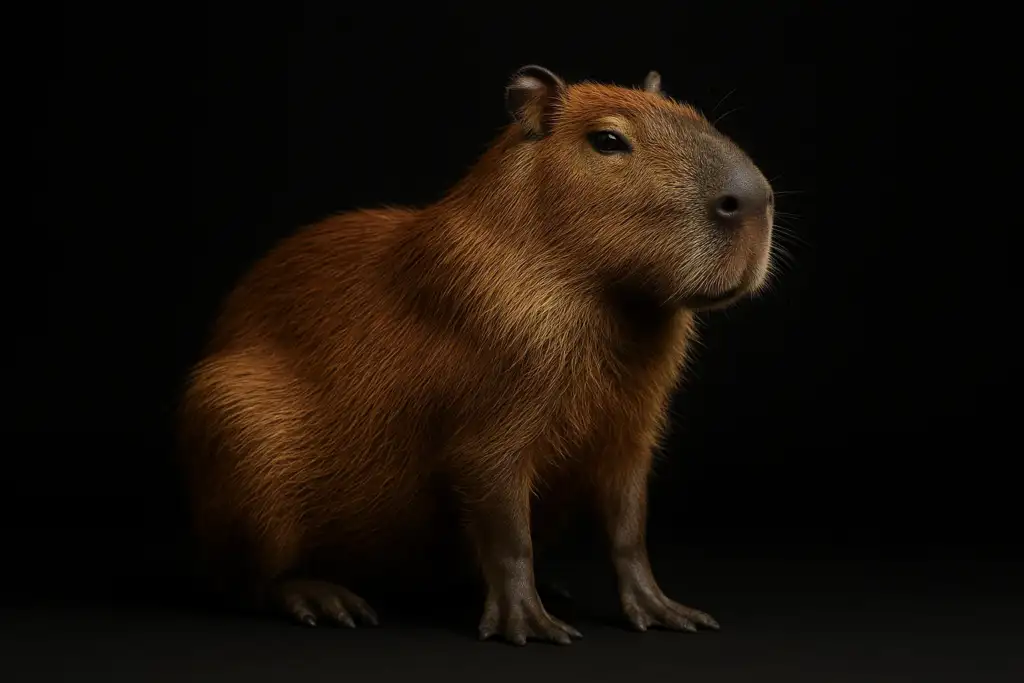
Photo by Philipp Mika on Unsplash
Ever met a 100-plus-pound rodent that looks more like a friendly pig? That’s the capybara for you, toting in at around 4½ feet long and tipping the scales at up to 143 pounds. Native to swamps and riverbanks across much of northern and central South America—and yes, you’ll even find a small non-native crowd soaking up the Florida sun—these gentle giants have won hearts from Bogotá to Orlando (National Geographic, 2025).
Habitat & Aquatic Superpowers
I’ll never forget the first time I saw one gliding through the water—it was like watching a living torpedo made of soft brown fur. Here’s what makes them true water lovers:
- Web-toed champions: Those half-webbed feet? Perfect for paddling and diving.
- Built-in periscope: Eyes, ears, and nostrils sit high on the head so they can stay mostly underwater and still keep watch.
- Quick-dry coats: Their reddish-brown fur repels water, drying fast as they clamber onto land for a snack.
The Morning “Second Breakfast” Ritual
Okay, bear with me—it sounds gross, but it’s brilliant. Capybaras munch grass all day, then in the morning, they eat a special batch of their overnight droppings. Why? Those pellets are rich in protein-loving microbes, giving the capybara one more shot at nutrients it missed the first time around. Think of it like a breakfast of champions… just don’t watch too closely.
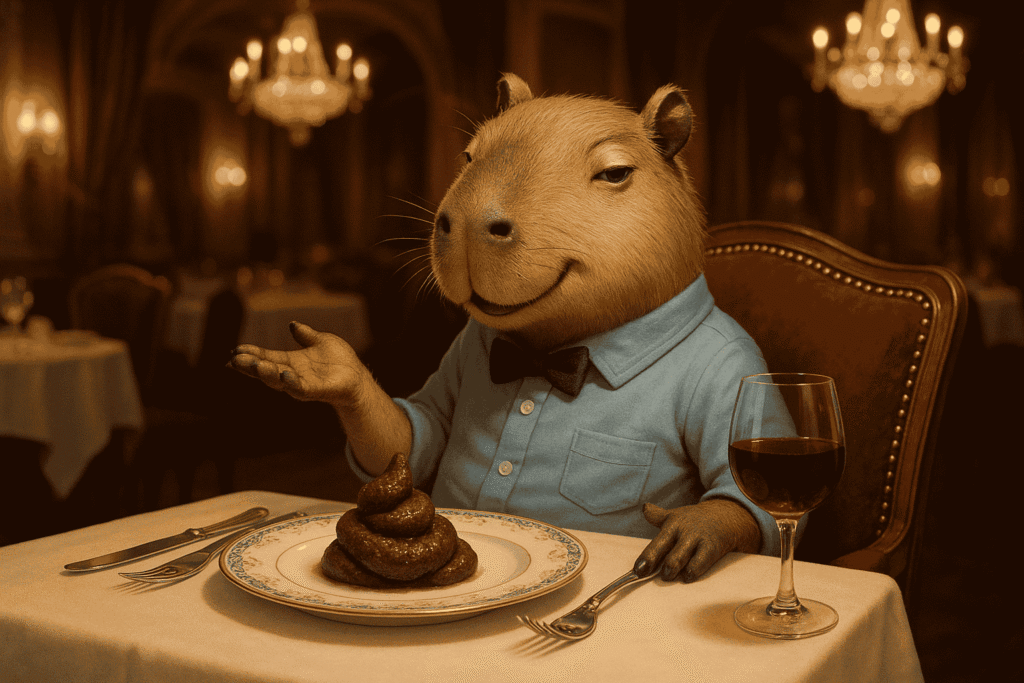
Social Butterflies of the Wetlands
You might picture rodents as loners, but capybaras throw the ultimate pool party. Groups of up to 40 pals will laze together in muddy banks or graze in the early morning mist. Their chill vibe has even earned them the nickname “nature’s ottoman”—other animals love flopping on them for a free ride!
- Pack living keeps them safer from predators.
- Endless tolerance: Birds, monkeys—even sleepy otters have been spotted hitching a ride.
- Calm charisma: They’re so mellow, they’ve become Insta-famous for just… being chill.
Takeaway: Why I Can’t Help But Love Capybaras
Whenever life feels a bit too fast, I think of these laid-back grazers—floating through rivers, sharing droppings (yes, really), and hosting the friendliest wildlife get-togethers you’ll ever see. If you’re feeling overwhelmed, take a leaf out of the capybara playbook: slow down, stick with your crew, and don’t be afraid of a little oddball brilliance.
Quick Facts
- World’s largest rodent
- Excellent swimmers
- Can sleep underwater with just their nose above water
- Diet: Grasses, aquatic plants, fruits
- Lifespan: Up to 7 years in the wild
- Conservation: Least Concern, but some local populations have been wiped out by hunting
2. Naked Mole Rat (Heterocephalus glaber)

The naked mole rat might just be the weirdest little legend in the rodent world. It’s bald, it’s wrinkly, and yeah, it kind of looks like a pink sausage with teeth—but don’t let the looks fool you. Biologically, this creature is an overachiever. Funny enough, despite the name, it’s not a mole or a rat. Genetically, it’s closer to guinea pigs, porcupines, and chinchillas. Go figure.
Remarkable Longevity
This is where naked mole rats start showing off. Most rodents of their size live maybe 2 to 5 years if they’re lucky. But these guys? They can cruise past 30 years—and some have even hit 40 in captivity. That’s like finding out your pet hamster is suddenly eligible for a retirement plan.
And they don’t just live long—they age differently too. No wrinkling (well, no extra wrinkling), no age-related diseases piling up, and they stay fertile for most of their lives. It’s kind of like they hit adulthood and just hit pause on the aging clock. Wild, right?
Unique Adaptations
Naked mole rats live underground in super tight, low-oxygen tunnels where most animals would just tap out. But not these guys. They can survive in environments with barely any oxygen and tons of carbon dioxide—levels that would knock out most mammals, including us.
They’re also famously resistant to cancer (like… seriously resistant). And they have this eusocial colony setup, which is rare for mammals. There’s a queen who’s the only one breeding, and everyone else is a worker or soldier. Kinda like bees or ants, but in rodent form. Nature.
Scientists are diving deep into how these little mutants pull off things like cancer resistance and extreme longevity. There’s hope that by studying them, we might unlock secrets that could help humans live longer and healthier lives, too.
Quick Facts
- Lives 30+ years (which is bonkers for a rodent)
- Nearly immune to cancer
- Can survive with almost no oxygen
- Has an eusocial setup with a queen and workers
- Feels no pain from acid or spicy stuff (yes, really)
- A cold-blooded mammal, which is super rare
3. Pygmy Jerboa (Salpingotulus michaelis)
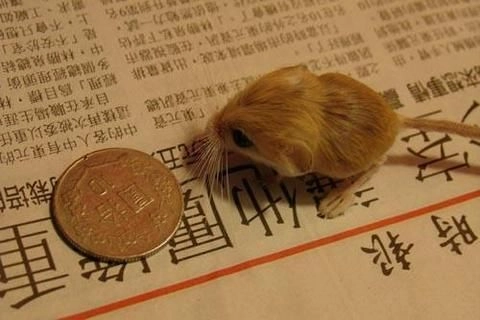
this image is taken from Pinterest Pin
Alright, if you’ve never heard of the pygmy jerboa, prepare to fall in love with what might be the tiniest, cutest desert ninja you’ve ever seen. This little fluffball is the size of a paperclip—seriously, its body is only about 4.3 cm long (that’s 1.7 inches) and it weighs barely 3.2 grams. That’s less than a single sheet of paper.
It’s so small that when it moves, it almost looks like a jumping bean with legs. And the legs? Comically long for its size. Nature had some fun designing this one.
Remarkable Adaptations
The pygmy jerboa is built for life in the desert, and it shows. Those oversized hind legs aren’t just for show—they let this tiny rodent hop across the sand like a micro-kangaroo. It uses its long tail for balance, kind of like a tightrope walker, and its sandy-colored fur helps it blend right into the dunes.
It’s got stealth and style.
Survival Mechanisms
Now here’s the cool part: pygmy jerboas have this thing called facultative hypothermia. Fancy term, but all it means is they can slow their body way down—heart rate, breathing, everything—whenever they need to save energy. It’s kind of like hitting snooze on your whole body. This daily “power-down” mode helps them survive when food is scarce or the desert heat gets intense. Animalia.bio
Even though they’re teeny-tiny, these little guys are tough as nails. Living in harsh desert conditions isn’t easy, but they’ve evolved into tiny survival pros.
Quick Facts
- One of the smallest rodents on Earth
- Native to Pakistan (possibly Afghanistan too)
- Hops around like a mini kangaroo
- Lives a nocturnal lifestyle (comes out at night)
- Can go into daily torpor to save energy
- Conservation status: Data Deficient (we don’t know enough yet!)
4. Chinchilla (Chinchilla chinchilla)

Chinchillas are like the teddy bears of the rodent world—adorably round, ridiculously soft, and full of personality. They come from the chilly Andes mountains in South America and are most active during dawn and dusk (which makes them crepuscular, in case you like fancy words). Animal Diversity Web
But let’s be honest—what most people know about chinchillas is their insanely soft fur.
Extraordinary Fur
Okay, get this: every single chinchilla hair follicle grows about 60 individual hairs. That’s not a typo. For comparison, we humans get just one hair per follicle. That’s why petting a chinchilla feels like touching a cloud—or a piece of luxury velvet straight from heaven.
Their fur isn’t just for looks, though. It’s a survival tool. That plush coat helps them stay warm in the freezing altitudes of the Andes and keeps their bodies from losing too much water in the dry mountain air. Pretty clever, right? Animal Diversity Web
Conservation Crisis
Unfortunately, that same beautiful fur also made them a target. At one point, chinchilla fur was so valuable that coats made from wild chinchillas could sell for up to $100,000. The result? They were hunted like crazy.
It got so bad that the short-tailed chinchilla is now considered critically endangered. Wild populations have dropped by at least 80%, and in some places, they might be completely wiped out. While there are millions of chinchillas in homes and fur farms around the world today, the wild ones are hanging on by a thread. Animal Diversity Web
Quick Facts
- Has the densest fur of any land mammal (yep—denser than a polar bear’s!)
- Can’t bathe in water — they roll in dust to keep clean
- Listed as critically endangered in the wild
- Can jump up to 6 feet in a single leap
- Lifespan: 10+ years
- Eats seeds, fruit, and the occasional bug
5. Giant Beaver (Castoroides)
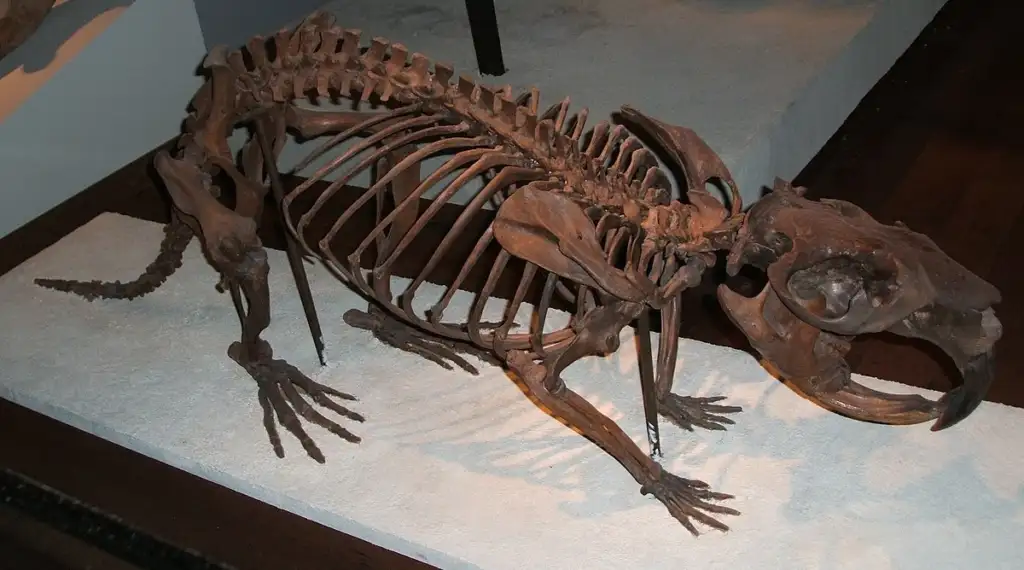
License: CC BY‑SA 3.0
Imagine a beaver the size of a black bear. Yep, that was the giant beaver, one of the weirdest and most impressive rodents to ever waddle across North America. These guys lived way back during the Pleistocene epoch, which is basically the same time mammoths and saber-toothed cats were hanging around. There were two known species—C. dilophidus in the southeastern U.S. and C. ohioensis, which was more widespread.
Impressive Size
This thing was huge. We’re talking around 6 to 7 feet long (yep, longer than most humans are tall) and weighing up to 276 pounds—basically a furry, semi-aquatic linebacker.

To put it in perspective, a modern beaver weighs maybe 40 to 60 pounds. So yeah, a giant beaver could probably give one of today’s beavers a piggyback ride—and still have energy left to snack on some plants.
Distinctive Features
One of the coolest things about them? Their insanely large teeth. Their front incisors could grow up to 15 cm long (that’s nearly 6 inches!) and weren’t smooth like the ones modern beavers have. Instead, they had this grooved, textured enamel that gave them extra strength—sort of like nature’s version of reinforced dental tools.
But here’s where it gets even more interesting: unlike modern beavers, there’s no evidence they built dams or lodges. So, despite the name, they may not have been the architects their smaller cousins are famous for being.
Sadly, the giant beaver vanished around 10,000 years ago, right around the time a bunch of other massive creatures—like mammoths and mastodons—also disappeared in what scientists call the Late Pleistocene extinction event.
Quick Facts
- About the size of a black bear
- Lived during the Pleistocene epoch
- Went extinct ~10,000 years ago
- Had huge grooved incisors (up to 6 inches!)
- Probably didn’t build dams or lodges
- Disappeared during the megafauna extinction
6. African Crested Porcupine (Hystrix cristata)
Alright, let’s talk about one of the most hardcore rodents you’ll ever meet—the African crested porcupine. This spiky legend isn’t just big for a porcupine… It’s one of the largest rodents on the planet. We’re talking about something that can grow over 3 feet long and weigh close to 66 pounds. That’s about the size of a golden retriever, but covered in quills instead of fur.

You’ll find these tough little tanks across much of Africa and even creeping into parts of the Mediterranean. They’re not exactly social butterflies, but they’re fascinating once you get to know them (Oregon Zoo).
Formidable Defense System
Here’s where it gets cool. Their body is a walking fortress of quills—some are short and thick, others long and needle-like, with the longest reaching about 13 inches. Imagine trying to mess with something that’s part porcupine, part punk rocker. When these guys feel threatened, they raise a dramatic “mohawk” of quills along their head and back to look bigger and badder. And honestly? It works. You’d back off, too.
Escalating Defense Tactics
But the African crested porcupine doesn’t just rely on looks. If a predator doesn’t take the hint, things start to escalate fast. First, it’ll stomp its feet (kinda like a toddler tantrum), then it clicks its teeth and rattles its tail, which is fitted with hollow quills that make a warning noise. It’s like nature’s version of “don’t make me come over there.”
Still not backing off? That’s when the porcupine goes full beast mode. It runs backward—yes, backward—and slams its short, strong quills into the attacker. And we’re not just talking about a slap on the wrist. These quills can pierce skin, snap off, and stay stuck in big predators like lions, leopards, or hyenas. Yeah. This chunky rodent can take down Africa’s top-tier hunters.
(Oregon Zoo)
Bonus Fact: Teeth That Never Stop Growing
And just in case you forgot, it’s still a rodent—it’s got those constantly growing teeth too. So they spend a good chunk of their time chewing on wood, bark, or whatever tough stuff they can find. Not because they’re hungry, but because it keeps their teeth from turning into tusks. Think of it like their version of brushing and flossing—just way more intense.
Quick Facts
- One of the largest rodents in the world
- Quills can be up to 13 inches long
- Lifespan of about 20 years
- Primarily nocturnal
- Monogamous, forming small family groups
- Diet: Tubers, bark, bulbs, fallen fruit
7. Springhare (Pedetes spp.)

Alright, so let me tell you about one of the weirdest animals you’ve probably never heard of: the springhare. Despite the name, it’s not a hare. Or a rabbit. It just looks like one if you’re squinting from far away. There are two types: one that lives in southern Africa (that’s Pedetes capensis), and another that hangs out in East Africa, mainly Kenya and Tanzania (P. surdaster).
I stumbled across this creature while falling down a late-night YouTube rabbit hole of “animals you didn’t know existed.” When I first saw it hopping, my brain went, “Wait… is that a kangaroo rat on steroids?”
Glowing Discovery
Now here’s where it gets wild — they glow in the dark. Yep, seriously. In 2021, scientists discovered that springhares have biofluorescent fur. That means under UV light, they light up in these insane pink-orange colors. It’s not just some glowstick coating, either — it comes from pigments in their actual hair. Pretty metal, right?
What’s even crazier? They’re the first Old World mammals (that just means mammals from Africa, Europe, or Asia) found to glow like this. I don’t know how they kept that secret for so long, but no one had ever checked them under a blacklight before. Science is weird like that.
Adaptive Behavior
Springhares are night owls with supercharged legs. They spend their days snoozing underground in burrows, and when the sun goes down, it’s go time. They come out to forage in open grasslands — the kind where they can keep an eye out for anything that wants to eat them.
And here’s my favorite part: when they sense danger, they don’t run — they bounce. Like, full-on kangaroo-style. I’ve watched clips of them launching into the air to make a getaway. It’s both impressive and kinda funny. You don’t expect a rodent to suddenly go boing-boing across the savanna.
Also, unlike some other glowing mammals (yes, those exist too), springhares don’t seem to follow the same rulebook. Scientists are still trying to figure out what purpose their glow serves—if any at all. It might be a leftover trait, or maybe it’s got something to do with avoiding predators or finding mates. Nobody knows for sure yet, which makes them even more mysterious.
Quick Facts
- Fur glows pinkish-orange under UV light
- Neither a hare nor a rabbit, but a distinct rodent
- Moves by powerful bipedal hops
- Nocturnal and solitary
- Creates complex burrow systems
- Endemic to Africa
8. Pacarana (Dinomys branickii)

The pacarana is a large, chunky, slow-moving rodent native to South America and the only member of the family Dinomyidae. Its name comes from the indigenous Tupi people, who called it “pacarana,” meaning “false paca,” due to its resemblance to the paca, another South American rodent.
Size and Appearance
The pacarana holds the distinction of being the third largest living rodent, behind only the capybara and beaver. It can weigh 10-15 kg (22-33 pounds) and has been described as resembling an immense guinea pig or a spineless porcupine. Despite its substantial size and lumbering gait, the pacarana is surprisingly agile and can climb trees.
Habitat and Behavior
Pacaranas inhabit neotropical, mostly upland rainforests across several South American countries, including Venezuela, Ecuador, Colombia, Brazil, Peru, and Bolivia. They are nocturnal and tend to be rather secretive, making them difficult to study in the wild.
Their nicknames include “Branik’s rat” and “Terrible Mouse,” with the latter reflected in their scientific family name, Dinomyidae. While currently listed as “Least Concern” conservation-wise, pacaranas face threats from habitat destruction, particularly deforestation in their native range.
Quick Facts
- World’s third-largest rodent
- The only member of the Dinomyidae family
- Can live up to 10 years
- Uses hands to handle food
- Long gestation period (225-283 days)
- Name means “false paca” in the Tupi language
9. Degu (Octodon degus)
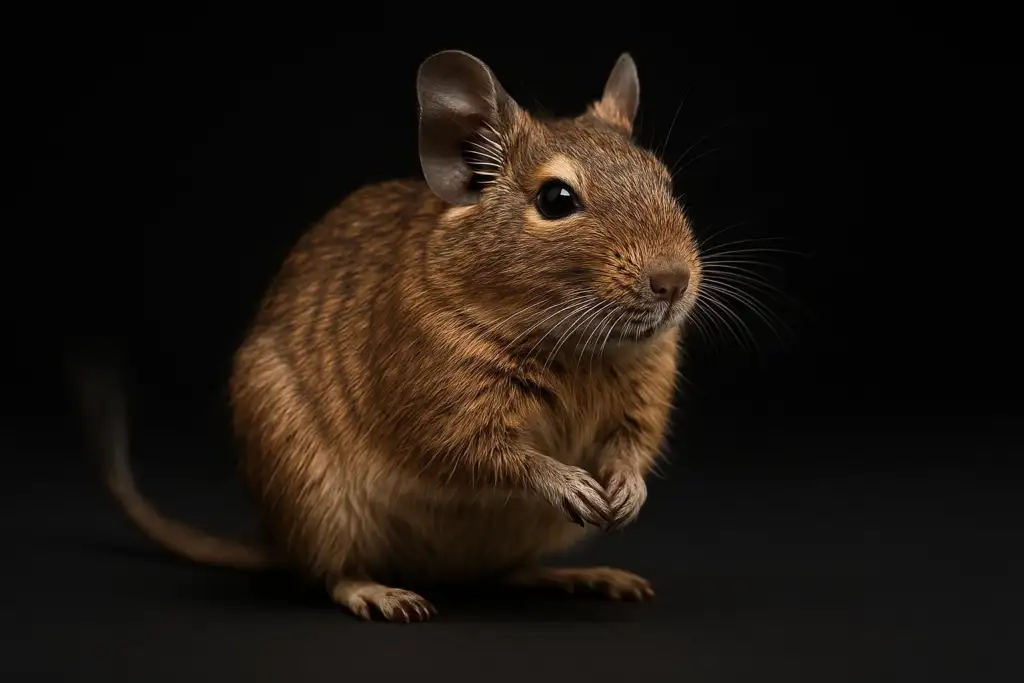
The degu is a small rodent native to Chile, related to chinchillas and guinea pigs. These social creatures have gained popularity as exotic pets due to their diurnal nature, intelligence, and engaging personalities .
Exceptional Lifespan
Degus have an unusually long lifespan for rodents, commonly living for 6-8 years with proper care, and as long as 13 years has been reported. This makes them a longer-term commitment than many other pet rodents, which typically live only 2-3 years.
Unique Health Considerations
A particularly interesting characteristic of degus is their susceptibility to diabetes. They have evolved to thrive on a diet very low in sugar, and consuming sugary foods can quickly lead to diabetes. This makes them valuable models for diabetes research, but also means pet degus require specialized diets.
Degus are highly social animals that live in communities in the wild and should be kept in pairs or small groups in captivity. They’re diurnal (active during daylight), making them more interactive pets than many nocturnal rodents. They’re known for their complex vocalizations—they make over 15 different sounds—and their ability to form strong bonds with both their kind and human caretakers.
Quick Facts
- Long lifespan (up to 13 years)
- Diurnal (active during the day)
- Highly social creatures
- Susceptible to diabetes
- Take dust baths like chinchillas
- Can see ultraviolet light
10. Viscacha (Lagidium spp.)

Viscachas are rodents belonging to two genera (Lagidium and Lagostomus) in the family Chinchillidae, native to South America. They bear a striking resemblance to rabbits, though they are more closely related to chinchillas.
Habitat and Adaptations
Mountain viscachas (genus Lagidium) inhabit dry, sparsely vegetated rocky cliffs, outcrops, and slopes throughout the Andes Mountains from central Peru southward to Chile and Argentina. Though poor diggers, they are remarkably agile on rocky terrain, where they feed on the limited vegetation available in these harsh environments.
Physical Characteristics
Viscachas have dense, soft fur similar to their chinchilla relatives, though not quite as luxurious. They’re distinguished by their long ears, bushy tails, and powerful hind limbs adapted for leaping across rocky terrain. The plains viscacha (Lagostomus maximus) is larger and more stocky than the mountain species, with distinctive dark facial markings.
Plains viscachas are known for their complex social structures and tendency to collect and arrange objects around their burrow entrances, including bones, stones, and human-made items—earning them the nickname “the housekeepers of the pampas”.
Quick Facts
- Related to chinchillas
- Adapted for life on rocky terrain
- Plains viscachas collect objects around their burrows
- Mountain viscachas have excellent jumping ability
- Mostly herbivorous diet
- Conservation status varies by species
11. Muskrat (Ondatra zibethicus)

Muskrats are medium-sized, semi-aquatic rodents native to North America. They have since been introduced to parts of Europe, Asia, and South America. These stocky, broad rodents are perfectly adapted to wetland environments.
Aquatic Adaptations
Muskrats possess numerous adaptations for their semi-aquatic lifestyle. They have partially webbed hind feet that act as powerful paddles for swimming, water-repellent fur, and specialized lips that close behind their front incisors, allowing them to gnaw underwater without swallowing water. Perhaps most remarkably, they can remain submerged for up to 15 minutes.
Ecological Importance
Despite often being overlooked, muskrats play vital roles in wetland ecosystems. As ecosystem engineers, they create open water spaces within dense vegetation, benefiting numerous other species. Their feeding habits help maintain plant diversity, as they clear areas of dominant vegetation. Additionally, their burrows and lodges provide habitat for other wildlife species.
Muskrats also have a special physiological adaptation called regional heterothermia, which regulates blood flow to their extremities, helping them conserve heat while swimming in cold water. This allows them to remain active throughout winter, even under ice .
Quick Facts
- Can swim underwater for up to 15 minutes
- Builds lodge structures similar to beavers
- Can close lips behind incisors to gnaw underwater
- Controls wetland vegetation through feeding
- Named for scent glands that produce a musky odor
- Creates habitats used by numerous other species
12. Coypu/Nutria (Myocastor coypus)
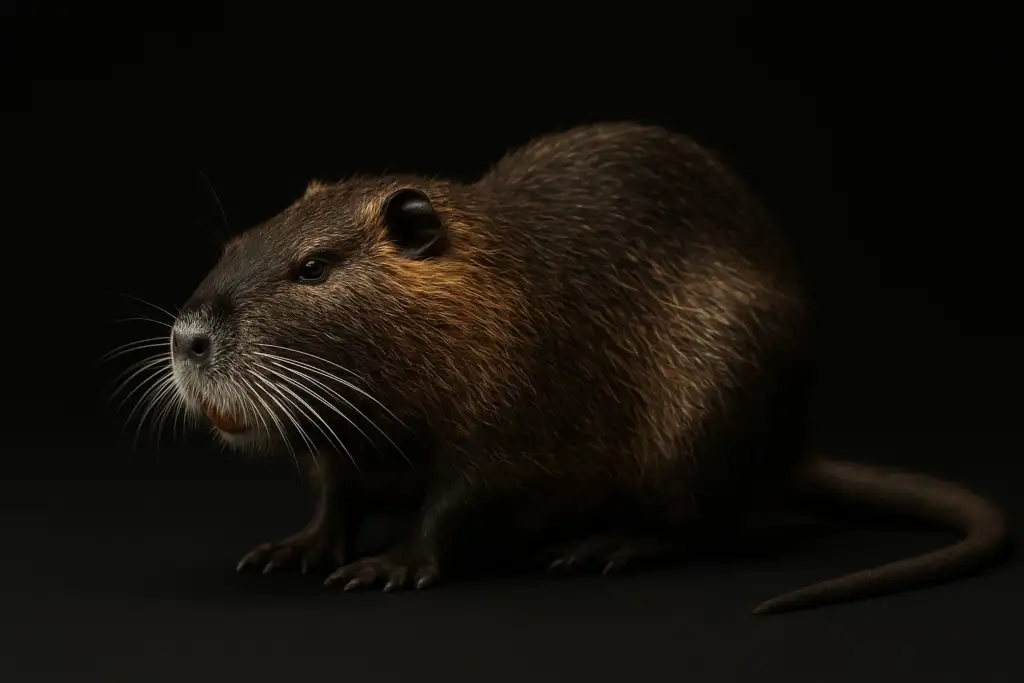
The coypu, also known as nutria, is a large semi-aquatic rodent native to South America that has been introduced to many parts of the world. Often mistaken for beavers or muskrats, these invasive rodents can cause significant ecological and economic damage .
Distinctive Features
Nutria have several distinctive characteristics that set them apart from similar species. They possess bright orange-yellow incisors, white whiskers, and a round, rat-like tail (unlike the beaver’s flat tail). Their most unusual feature is that their mammary glands are located high on their flanks rather than on the abdomen, allowing their young to nurse even while the mother is in water.
Environmental Impact
As an invasive species in many regions, nutria cause extensive environmental damage, particularly in wetland areas with high population densities. Their voracious feeding habits can transform densely vegetated wetlands into open water, destroying habitat for native species. Their burrowing activities damage river banks, levees, and irrigation systems.
Nutria were originally introduced to many countries for fur farming, but when the fur market collapsed, many were released or escaped into the wild. Today, they’re established on every continent except Australia and Antarctica, posing ongoing management challenges in many regions.
Quick Facts
- Native to South America but invasive worldwide
- Distinctive orange-yellow incisors
- Can consume 25% of their body weight daily
- Uniquely positioned mammary glands for aquatic nursing
- Extremely destructive to wetland ecosystems
- Can produce up to 13 young per litter, 3 times yearly
13. Beaver (Castor spp.)
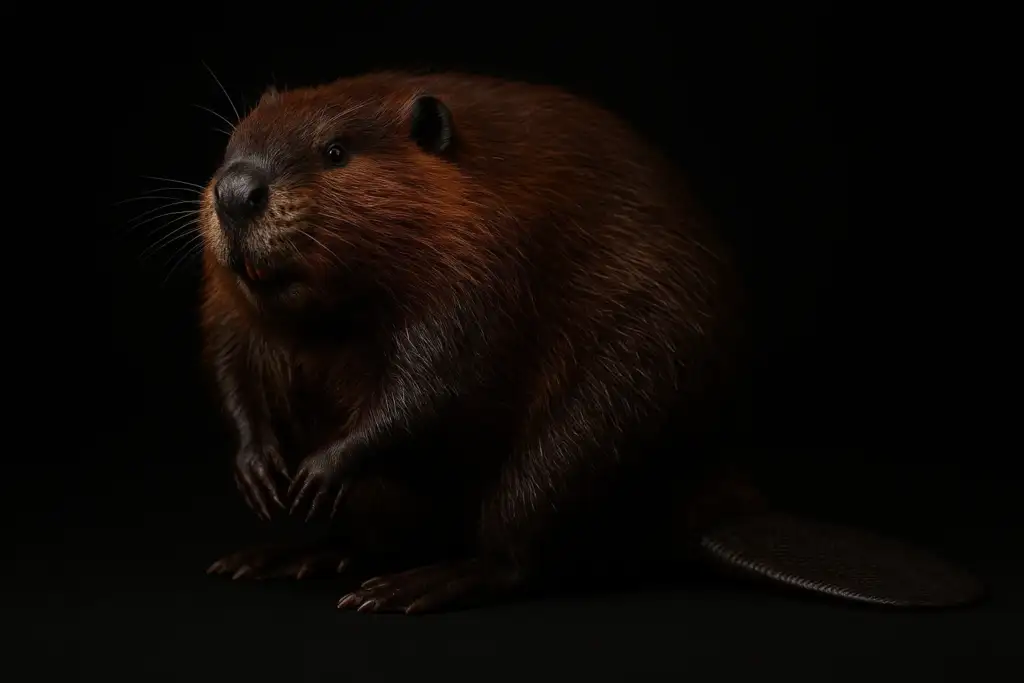
Beavers are large, semi-aquatic rodents known for their exceptional ability to modify their environment. Two extant species exist: the North American beaver (Castor canadensis) and the Eurasian beaver (Castor fiber), both of which are renowned for their dam-building behavior.
Nature’s Engineers
Often called “ecosystem engineers,” beavers transform landscapes more dramatically than perhaps any other animal except humans. Their dams create wetlands that help purify water systems, moderate floods and droughts, and create habitat for countless other species. A single beaver dam can store millions of gallons of water, mitigating both flood and drought effects.
Remarkable Adaptations
Beavers possess numerous adaptations for their semi-aquatic, tree-felling lifestyle. Their continuously growing incisors have iron-infused enamel, giving them an orange color and exceptional hardness for cutting through wood. Transparent eyelids function like built-in swimming goggles, while valve-like ears and nostrils close underwater. Their flat, paddle-like tail serves multiple functions: a rudder while swimming, a prop while cutting trees, an alarm system when slapped on water, and a fat storage organ for winter months.
After being hunted to near extinction for their fur, beavers have made a remarkable comeback in many parts of their native range. Their return often brings dramatic positive changes to ecosystems, leading to increased biodiversity and improved water quality .
Quick Facts
- Second largest living rodent (after capybara)
- Can remain underwater for up to 15 minutes
- Dam structures can last decades or centuries
- Orange teeth contain iron for extra strength
- Creates wetlands that support hundreds of other species
- Monogamous, with family units working together
14. Wild Hamster (Cricetus cricetus)
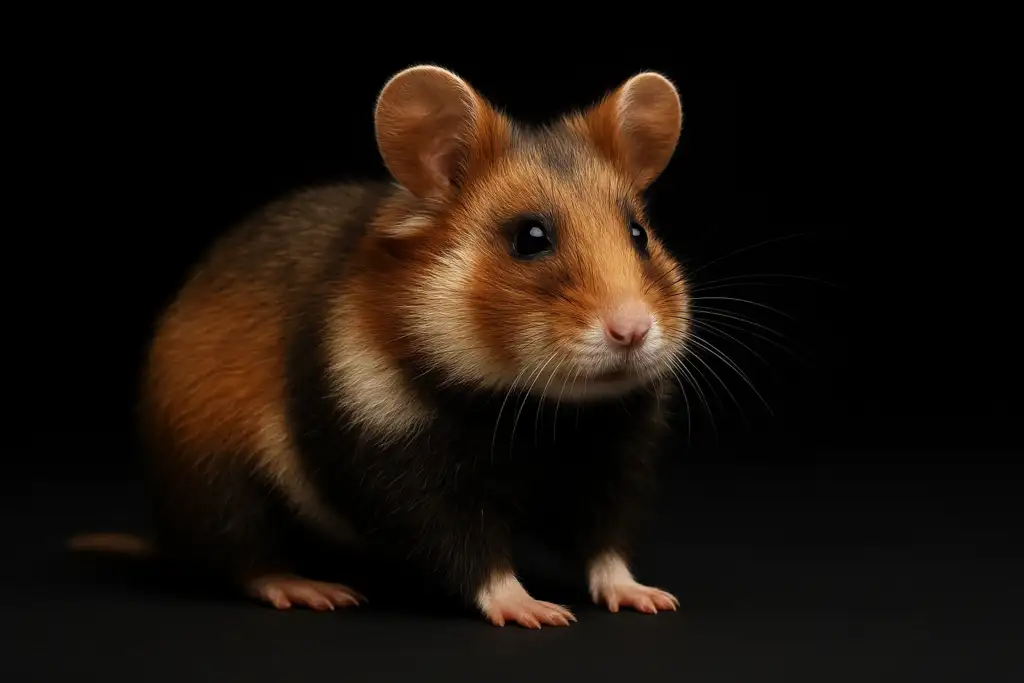
The wild or common hamster, native to Europe and Asia, is a critically endangered species that has experienced a catastrophic population decline in recent decades. Unlike their domesticated cousins kept as pets, wild hamsters are larger, more aggressive, and face severe conservation challenges .
Dramatic Decline
Wild hamster populations have collapsed across Europe, with their range shrinking by an estimated 94% in France and 75% in Eastern Europe. This precipitous decline has led to their classification as critically endangered on the IUCN Red List. Agricultural intensification, habitat fragmentation, and climate change are believed to be the primary factors driving their disappearance .
Conservation Efforts
In response to this crisis, conservation organizations have implemented breeding programs to restore wild hamster populations. For example, the International Fund for Animal Welfare (IFAW) has supported a wild hamster breeding program at Kyiv Zoo in Ukraine, providing financial support for feed, veterinary care, supplies, and lightweight cages as part of a science-based project to boost hamster numbers.
Wild hamsters are larger than their pet counterparts, reaching up to 14 inches in length and weighing up to 14 ounces. They’re known for their elaborate underground burrow systems, which include separate chambers for nesting, food storage, and waste. These solitary animals can be aggressive and territorial, particularly during the breeding season.
Quick Facts
- Critically endangered species
- Range has declined by 75-94% across Europe
- Larger and more aggressive than pet hamsters
- Creates complex burrow systems up to 6 feet deep
- Can store up to 65 pounds of food in cheek pouches
- Subject of active conservation breeding programs
15. Bavarian Pine Vole (Microtus bavaricus)
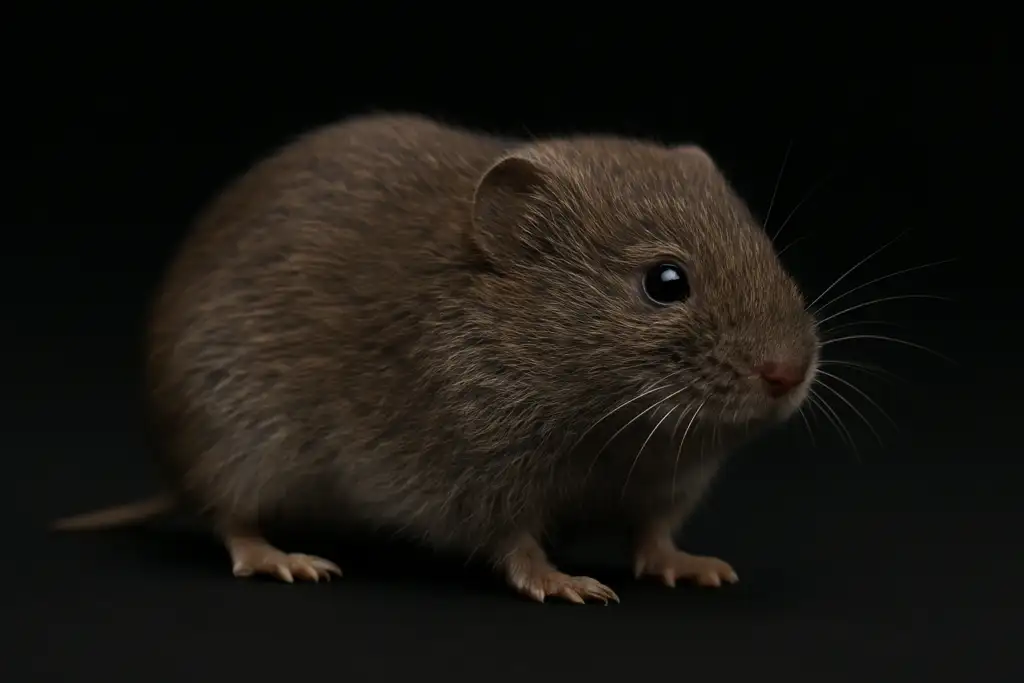
The Bavarian pine vole is one of Europe’s most endangered rodents, with fewer than 50 mature individuals believed to remain in the wild. This critically endangered species is found exclusively in very small, isolated populations in the alpine regions of Bavaria, Germany .
Rediscovery Story
The Bavarian pine vole has a remarkable conservation history. It was believed extinct for decades until its rediscovery in 2000, which represents one of the most surprising rediscoveries in European mammalogy. The few remaining populations are extremely vulnerable due to their tiny range and low numbers.
Habitat and Threats
These small voles inhabit subalpine meadows and forests in very specific microhabitats. Their precarious situation is largely due to habitat loss and fragmentation caused by human activities like agriculture, forestry, and development. Climate change poses an additional threat, as warming temperatures push alpine-adapted species to ever-higher elevations with diminishing available habitat.
Conservation efforts for the Bavarian pine vole include habitat protection, monitoring of the few known populations, and research to better understand their ecological requirements. However, with such a small population and limited range, their long-term survival remains uncertain without significant intervention.
Quick Facts
- Critically endangered with fewer than 50 individuals
- Thought extinct for decades before rediscovery in 2000
- Endemic to a tiny area in Bavaria, Germany
- Small rodent approximately 3-4 inches long
- Faces multiple threats from habitat loss and climate change
- One of Europe’s most endangered mammals
Deep Knowledge: Understanding Rodents
Ecological Importance of Rodents
Despite their often negative reputation, rodents are keystone species in many ecosystems, playing crucial roles that support biodiversity and ecosystem function. Their contributions are often underappreciated yet vital for healthy ecosystems around the world.
Seed Dispersal and Plant Regeneration
Rodents are among nature’s most important seed dispersers, significantly influencing which plants propagate and where they grow. Through scatter-hoarding behavior—wherein they collect and bury seeds in numerous small caches—rodents effectively plant trees and other vegetation.
Research has shown that rodents often transport seeds to microsites that are ideal for germination. Studies in forest gaps demonstrate that rodents disperse seeds further in gaps than in closed canopies, helping to promote forest regeneration after disturbances. As many as 25-30% of scatter-hoarded seeds may remain undiscovered, allowing them to germinate and establish new plants.
Ecosystem Engineering
Several rodent species qualify as “ecosystem engineers”—organisms that physically modify habitats in ways that affect many other species. Beavers are perhaps the premier example, creating wetlands with their dams that purify water, mitigate floods and droughts, and provide habitat for countless plant and animal species.
Burrowing rodents like prairie dogs, ground squirrels, and kangaroo rats also engineer ecosystems by creating subterranean networks that aerate soil, enhance water infiltration, and provide shelter for other species. Muskrats clear areas of dense vegetation in wetlands, creating open water areas that benefit waterfowl and aquatic plants.
Critical Links in Food Webs
Rodents represent a crucial link in food webs worldwide, serving as primary consumers that convert plant material into protein that can be utilized by higher-level predators. They sustain diverse predator communities, including birds of prey, canids (wolves, foxes), felids (wild cats), snakes, and even large spiders .
The abundance of rodents in most ecosystems makes them particularly important for predator population stability. When rodent populations decline, the effects ripple throughout the entire ecosystem, often leading to decreased predator numbers or forcing predators to seek alternative prey, which can disrupt additional ecological relationships.
Soil Health and Nutrient Cycling
Burrowing rodents contribute significantly to soil formation and health. Their tunneling activities mix soil layers, incorporating organic matter deeper into the soil profile. This process, along with their waste deposition, enhances nutrient availability and soil fertility. Studies have shown increased plant productivity in areas with moderate rodent activity compared to areas without rodents.
Additionally, abandoned rodent burrows create microhabitats that support diverse communities of invertebrates, fungi, and microorganisms that are fundamental to decomposition processes and nutrient cycling, further enhancing ecosystem productivity and resilience.
Conservation and Extinction Status
While many rodent species maintain robust populations, a significant number face serious conservation challenges, and some have already been lost to extinction. The conservation status of rodents varies dramatically across different species, highlighting both notable conservation successes and concerning declines.
Critically Endangered Rodents
Several rodent species face imminent extinction risks. In Europe alone, the wild common hamster has experienced range reductions of up to 94% in some regions, while the Bavarian pine vole population has dwindled to fewer than 50 mature individuals. Similarly, the short-tailed chinchilla has declined by at least 80% over recent decades due to poaching for its valuable fur, despite legal protection.
The speckled ground squirrel population has decreased by a staggering 99% in just 30 years, shifting from near threatened status to critically endangered in 2023. The Oltenia blind mole-rat (Spalax istricus) is another critically endangered European rodent facing habitat loss and fragmentation.
Conservation Success Stories
While many rodent species face threats, there have been notable conservation successes. The North American beaver, once hunted to near extinction for its fur, has made a remarkable comeback in many regions thanks to hunting regulations, reintroduction programs, and greater awareness of its ecological value. Today, beavers have reclaimed much of their historical range and continue to expand.
Several endangered rodent species are benefiting from focused conservation efforts. For example, breeding programs like the wild hamster project at Kyiv Zoo in Ukraine aim to boost populations for eventual reintroduction. Similarly, conservation initiatives for various endangered squirrel species have shown promising results through habitat protection and restoration efforts .
Extinct Rodent Species
The fossil record reveals numerous extinct rodent species, ranging from recently lost varieties to prehistoric giants. The giant beaver (Castoroides) was a bear-sized rodent that inhabited North America during the Pleistocene, going extinct approximately 10,000 years ago alongside other megafauna at the Pleistocene-Holocene transition .
More recent extinctions include species like the Indefatigable Galápagos mouse, the Little Swan Island hutia, and the Candango mouse – all lost within the past century due largely to habitat destruction, introduced predators, or direct human persecution. Each extinction represents a unique evolutionary lineage that can never be recovered, highlighting the importance of conservation efforts for currently threatened rodent species.
Conservation Challenges
Rodent conservation faces unique challenges. As a group, rodents often receive less public support and funding compared to more charismatic endangered animals. Additionally, because many species are considered agricultural pests or disease vectors, conservation efforts can be complicated by conflicting management objectives .
Habitat loss and fragmentation remain the primary threats to most endangered rodent species, often compounded by climate change, which is particularly impacting specialized species with narrow ecological requirements. The loss of a rodent species—even the smallest—can have cascading consequences for humans and the environment, particularly when the species plays a keystone ecological role.
Evolutionary History and Relationships
Rodents represent one of evolution’s greatest success stories. As the largest order of mammals, comprising roughly 40% of all mammalian species, with around 2,375 living species, they have adapted to virtually every terrestrial ecosystem on Earth.
Ancient Origins
The rodent lineage emerged approximately 56 million years ago during the Paleocene epoch, with the earliest known fossil rodent being Paramys from North America. The defining characteristic that unites all rodents is their specialized dentition, particularly their continuously growing incisors with enamel only on the front surface, creating self-sharpening cutting edges ideal for gnawing.
This dental innovation proved remarkably advantageous, allowing early rodents to exploit food sources that were inaccessible to other mammals. Combined with their small size, high reproductive rates, and adaptability, this gave rodents an evolutionary edge that has allowed them to diversify into thousands of species occupying numerous ecological niches.
Evolutionary Diversity
Modern rodents are divided into several major groups. The most diverse is Muroidea (mice, rats, voles, hamsters, gerbils), comprising over 1,500 species—approximately two-thirds of all rodent diversity. Other significant groups include Sciuridae (squirrels, chipmunks, marmots), Caviomorpha (South American rodents including capybaras, guinea pigs, chinchillas), and Castoridae (beavers).
This diversity is reflected in their remarkable size range, from the tiny Baluchistan pygmy jerboa weighing just 3.2 grams (0.11 ounces) to the massive capybara weighing up to 65 kg (143 pounds) —a size difference of over 20,000 times.
Exceptional Adaptations
Through their long evolutionary history, rodents have developed an impressive array of specializations for diverse lifestyles. These include the naked mole-rat’s eusocial behavior and extraordinary longevity , the powerful incisors of beavers reinforced with iron compounds, the gliding membranes of flying squirrels, and the desert adaptations of jerboas allowing them to survive with minimal water .
Recent discoveries continue to reveal new aspects of rodent evolution and adaptations. In 2021, researchers documented biofluorescence in springhares, marking the first known case in an Old World eutherian mammal . Similarly, ongoing studies of naked mole-rats have revealed unique physiological adaptations that grant them exceptional longevity and cancer resistance, expanding our understanding of mammalian biology.
Megafauna Rodents
While most modern rodents are relatively small, their evolutionary history includes numerous giant forms. The extinct giant beaver (Castoroides) reached sizes comparable to black bears, with specimens measuring up to 2.2 meters (7.2 feet) long and weighing up to 125 kg (276 pounds). Even more massive was Josephoartigasia monesi, an extinct South American rodent estimated to have weighed around 1,000 kg (2,200 pounds)—roughly the size of a modern bison.
These giant rodents evolved primarily during the Pliocene and Pleistocene epochs, particularly in South America, which was isolated for much of its geological history, allowing unique evolutionary trajectories. Most megafauna rodents disappeared during the end-Pleistocene extinction event approximately 10,000 years ago, alongside mammoths, mastodons, and other large mammals .
Unique Behaviors and Adaptations
Rodents exhibit some of the most fascinating and unusual behaviors in the animal kingdom, from sophisticated engineering achievements to remarkable physiological adaptations. Their diverse lifestyles have led to the evolution of specialized behaviors that enable them to thrive across virtually every terrestrial environment.
Extreme Longevity and Cancer Resistance
Naked mole-rats showcase perhaps the most extraordinary physiological adaptations among rodents. With lifespans exceeding 30 years—up to 10 times longer than similarly sized rodents—they defy typical mammalian aging patterns. Even more remarkably, they show negligible senescence (deterioration with age) and remain fertile throughout most of their lives.
Their cancer resistance is equally impressive; spontaneous tumors are virtually unknown in naked mole-rats. Research has identified several mechanisms behind this resistance, including specialized hyaluronan (a type of sugar molecule) and enhanced cell-contact inhibition that prevents uncontrolled cell proliferation. These discoveries are providing valuable insights for human cancer research.
Engineering Marvels
Beavers’ engineering abilities are unparalleled in the animal kingdom, apart from humans. Their dams—constructed from branches, mud, and stones—can span over 500 meters (1,600 feet) and stand up to 3 meters (10 feet) tall. These complex structures can last for decades or even centuries with ongoing maintenance.
Equally impressive are beaver lodges—dome-shaped structures built in the ponds created by their dams. These lodges feature underwater entrances for protection against predators, ventilation holes, and multiple chambers, including dedicated living quarters lined with soft plant material. The temperature inside beaver lodges remains remarkably stable even during extreme winter conditions, demonstrating their sophisticated understanding of structural insulation.
Coprophagy and Specialized Digestion
Many rodents, including capybaras, practice coprophagy—the consumption of their feces. While this may seem unappetizing to humans, it represents a sophisticated nutritional adaptation. By consuming partially digested food, particularly in the morning when it’s rich in protein from microbes, these rodents effectively get a second chance to extract nutrients from tough plant matter.
This behavior is especially important for herbivorous rodents, as plant cellulose is difficult to break down. The initial passage through the digestive system enables microbial fermentation to begin, and the second passage allows for greater nutrient absorption. This double-digestion system is similar to but distinct from the rumination process seen in cows and other ruminants.
Biofluorescence
In 2021, scientists discovered that springhares exhibit vivid biofluorescence—they glow pinkish-orange under ultraviolet light. This phenomenon results from porphyrin pigments embedded within their hair fibers, marking the first documented case of biofluorescence in an Old World eutherian mammal.
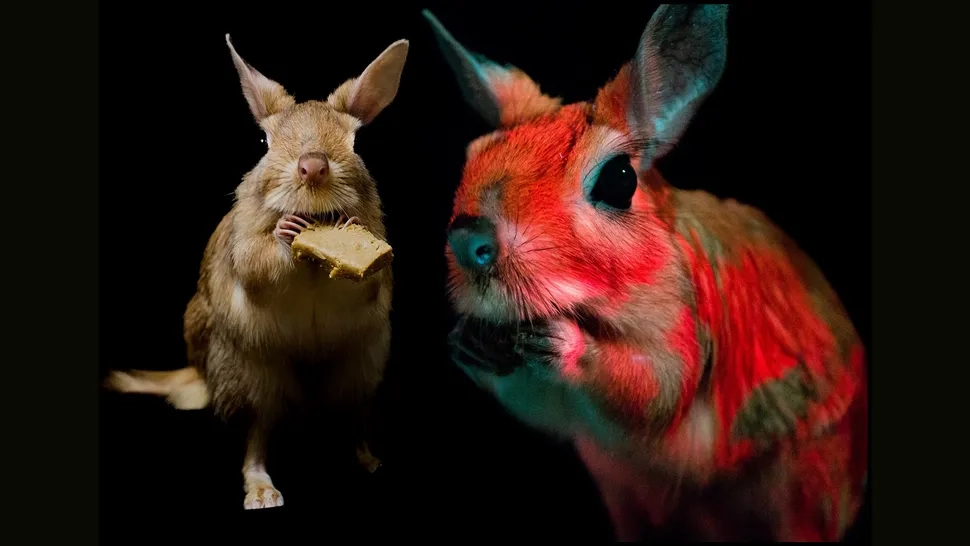
The evolutionary purpose of this trait remains uncertain. Hypotheses include predator confusion, social signaling, or potentially aiding in the detection of predators that might also fluoresce. Biofluorescence has been identified in other rodents, including flying squirrels, but the discovery in springhares was particularly surprising given their distinct ecological niche and evolutionary history.
Torpor and Hibernation
Many rodent species have evolved the ability to enter states of reduced metabolism to conserve energy during harsh conditions. Hibernation is employed by various ground squirrels, marmots, and dormice, involving prolonged periods of dramatically reduced body temperature, heart rate, and respiration during the winter months.
Even more remarkable is the daily torpor exhibited by species like the Baluchistan pygmy jerboa. This facultative hypothermia involves significantly slowing bodily functions, including respiration and circulation, daily. This adaptation helps these tiny desert dwellers survive on nutritionally poor diets and in harsh environmental conditions.
Cultural Significance and Human Relationships
Throughout human history, rodents have occupied a complex and often contradictory place in our cultures, mythologies, and daily lives. From revered symbols to feared pests, rodents have been deeply intertwined with human societies across civilizations and eras.
Symbolic Representations
Rodents feature prominently in cultural symbolism worldwide. In the Chinese zodiac, the rat is the first of twelve animals, representing intelligence, adaptability, and wealth. In Hindu mythology, the god Ganesha rides on a mouse, symbolizing the ability to overcome obstacles. Native American traditions often depict the beaver as a symbol of wisdom, dreaming, and building, acknowledging its engineering capabilities.
European folklore presents more ambivalent views, with mice sometimes portrayed as helpful (as in “The Tailor of Gloucester” where mice finish a waistcoat) but more often as troublemakers or harbingers of disease. The Pied Piper of Hamelin tale reflects historical concerns about rat-associated plague outbreaks, while also addressing themes of broken promises and lost children.
Rodents as Pets
Domesticated rodents have been valued companions for centuries. Selective breeding has created numerous varieties of mice, rats, hamsters, guinea pigs, and chinchillas that serve as popular pets worldwide. Their intelligence, social nature, and relatively simple care requirements make them accessible companions for many households.
Different rodent species offer varying pet experiences. Rats are renowned for their intelligence and strong social bonds with humans, often compared to small dogs in their interactive capabilities. Guinea pigs and chinchillas are known for their gentle temperaments and longevity, with chinchillas living up to 20 years in captivity. Degus, with their diurnal habits and complex vocalizations, offer interactive daytime companionship.
Scientific Contributions
Laboratory rodents have been instrumental to scientific and medical progress. The laboratory mouse is the most widely used animal model in biomedical research, contributing to countless medical advances including vaccines, surgical techniques, and treatments for cancer, diabetes, and heart disease.
Specialized rodent species provide unique research opportunities. For example, naked mole-rats are studied for insights into cancer resistance and longevity , while degus serve as models for diabetes research due to their natural susceptibility to the condition . Recently, scientists have even taught rats to drive small cars, revealing surprising cognitive abilities and demonstrating that these rodents appear to enjoy mastering complex tasks .
Economic Impacts
Rodents have significant economic relationships with humans, both positive and negative. On the negative side, agricultural losses to rodent pests are estimated at billions of dollars annually worldwide. Urban rodent infestations cause property damage and can spread diseases. The invasive coypu (nutria) causes extensive damage to wetlands and water management infrastructure in many regions.
However, rodents also provide economic benefits. The fur trade, particularly for chinchillas and beavers, has been historically significant, though ethical concerns have reduced its prominence in recent decades. Ecotourism centered around charismatic rodents like capybaras and prairie dogs generates revenue in various regions. Perhaps most importantly, ecosystem services provided by rodents—including seed dispersal, soil improvement, and wetland creation by beavers—deliver immense economic value through enhanced ecosystem function and biodiversity support.
Test Your Rodent Knowledge
1. Which rodent is the world’s largest living species?
a) Beaver
b) Capybara
c) Pacarana
d) African Crested Porcupine
2. Which rodent species has been discovered to have biofluorescent fur?
a) Chinchilla
b) Springhare
c) Degu
d) Muskrat
3. Which rodent is known for its exceptional longevity of 30+ years?
a) Chinchilla
b) Beaver
c) Naked Mole Rat
d) Degu
4. Which of these is considered an ecosystem engineer?
a) Pygmy Jerboa
b) Beaver
c) Chinchilla
d) Wild Hamster
5. Which rodent is the world’s smallest?
a) African Pygmy Mouse
b) Baluchistan Pygmy Jerboa
c) Harvest Mouse
d) Bavarian Pine Vole
Answers:
1: b, 2: b, 3: c, 4: b, 5: b
Conclusion: Appreciating Nature’s Unsung Heroes
As we’ve explored the remarkable world of rodents, from the tiny Baluchistan pygmy jerboa to the massive capybara, from the cancer-resistant naked mole-rat to the industrious beaver, it becomes clear that these diverse creatures deserve far more appreciation than they typically receive.
Rodents are not merely small, scurrying creatures at the periphery of our awareness—they are ecological keystones, engineering experts, evolutionary marvels, and in many cases, charismatic animals with complex behaviors and social structures. Their contributions to ecosystems through seed dispersal, habitat creation, soil enhancement, and serving as critical links in food webs make them indispensable components of healthy biospheres worldwide.
While some rodent species maintain robust populations, others face significant conservation challenges. The critically endangered status of wild hamsters, Bavarian pine voles, and chinchillas reminds us that even common taxa can become threatened when their habitats are destroyed or they’re subjected to unsustainable exploitation. Conservation efforts for these species benefit not only the rodents themselves but the numerous other organisms that depend on the ecological services they provide.
By recognizing the value and fascination of rodents—their remarkable adaptations, their ecological importance, and their diverse roles in human culture and science—we gain a deeper appreciation for the complexity of natural systems and the importance of preserving all components of biodiversity, even those that may seem small or ordinary at first glance. In the grand tapestry of life on Earth, rodents are indeed unsung heroes worthy of our attention, respect, and protection.
References
- National Geographic. (2024). Capybara Facts. https://www.nationalgeographic.com/animals/mammals/facts/cabybara-facts
- NCBI. (2021). The Long, Strange Life of the World’s Oldest Naked Mole Rat. https://www.ncbi.nlm.nih.gov/search/research-news/13629
- Animalia.bio. (2024). Baluchistan Pygmy Jerboa – Facts, Diet, Habitat & Pictures. https://animalia.bio/baluchistan-pygmy-jerboa
- Animal Diversity Web. (2024). Chinchilla chinchilla. https://animaldiversity.org/accounts/Chinchilla_chinchilla/
- Wikipedia. (2024). Castoroides. https://en.wikipedia.org/wiki/Castoroides
- Oregon Zoo. (2024). African crested porcupine. https://www.oregonzoo.org/animals/african-crested-porcupine
- Nature. (2021). Vivid biofluorescence discovered in the nocturnal Springhare. https://www.nature.com/articles/s41598-021-83588-0
- Fact Animal. (2022). 11 Peculiar Pacarana Facts. https://factanimal.com/pacarana/
- The Conversation. (2023). In defence of rodents – why healthy ecosystems need them. https://theconversation.com/in-defence-of-rodents-why-healthy-ecosystems-need-them-196406
- Frontiers in Plant Science. (2018). Rodent-Mediated Seed Dispersal. https://www.frontiersin.org/journals/plant-science/articles/10.3389/fpls.2018.01911/full
- PMC. (2022). Rodent‐mediated plant seed dispersal. https://pmc.ncbi.nlm.nih.gov/articles/PMC8809425/
- IFAW. (2025). 10 of the most endangered animals in Europe in 2025. https://www.ifaw.org/journal/most-endangered-species-europe
- USDA. (2024). Nutria, An Invasive Rodent. https://www.aphis.usda.gov/sites/default/files/fsc-nutria-invasive-rodent.pdf
- Science Daily. (2024). Rodents News. https://www.sciencedaily.com/news/plants_animals/rodents/
